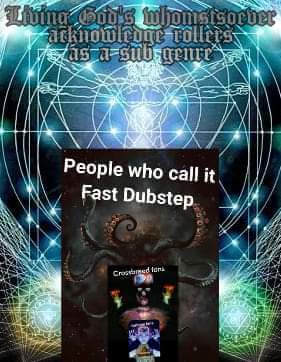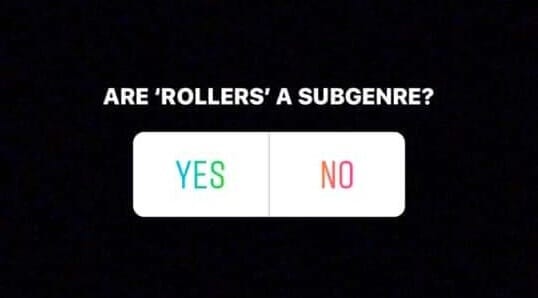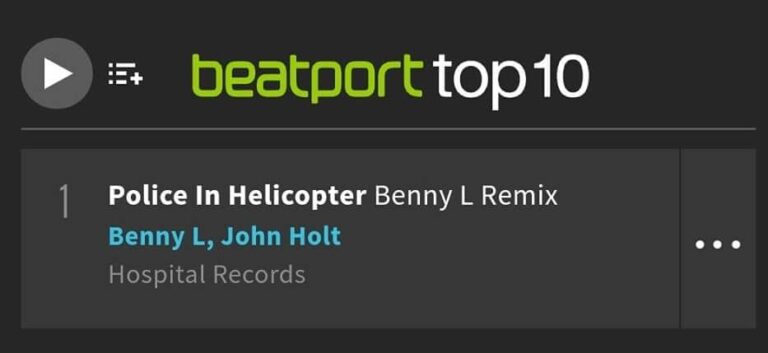A strange phenomenon has been taking hold in drum and bass in the past few months. We’re not sure who started it, we’re not sure if it goes beyond online discourse (or even beyond the confines of DNB Talk) but there does seem to be a substantial faction of heads who are trying, neigh, clamouring to elevate the term ‘rollers’ to the status of subgenre.
And it needs to stop. Now.
The arguments haven’t been terribly strong (unless you count the old standard “because I said so!” as an astute riposte) and there has been a terrifying meme war at the heart of it but it’s hard to gauge fully just how many people actually believe this silliness. Since this has come to light, however, our position is that a few things need to be clarified.
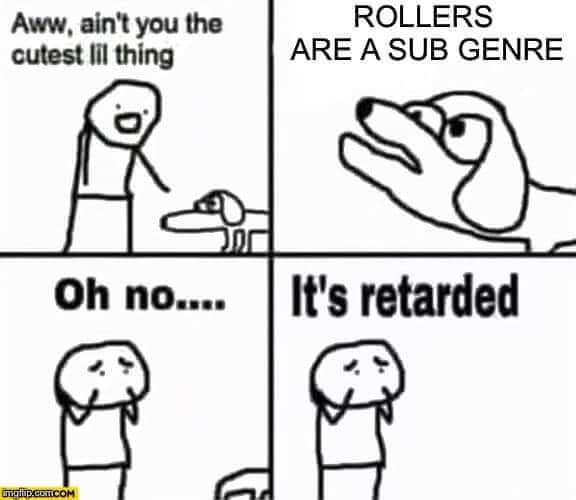
The Logic
The idea that rollers should be, or actually is already a subgenre seems to come from a flawed logic that really isn’t about what heavy hitter producers say (we have plenty of statements from heavy hitters by the way) but more rooted in a lack of music theory understanding.
Let’s break that down first with the original definition of a roller. Essentially, a roller is any track with a rolling bassline or beat structure. It’s not to do with a time signature, as some have suggested; it can be literally any time signature as long as it’s a consistent loop of bass, drums or both (sometimes even synths) which roll over and over throughout the track. There are jump up rollers, jungle rollers, neurofunk rollers, liquid rollers…hell, even jazz and rock have their rollers. Ever listen to Teddy Bear by Elvis? That is a rolling bassline that should be remixed. Someone get on that.
“For me, the term ‘rolling’ stands for the arrangement and feel of a track,” explains Brendan Futurebound, a man who’s not averse to playing rollers or releasing them on his label Viper. “It’s how it moves through the sequences, not having to dramatically change every 16 bars because the core elements are bang on the money. Rollers is not the subgenre, it’s the vibe.”
So, if one thinks of the technical structure of a roller, it is actually just a style of drums or bassline and can be inserted into literally any type of song. So if it can be used in any subgenre, how can it be its own subgenre?
One artist who’s been really vocal about this is Iris from Quadrant and Iris.
“The misclassification of rollers drives me nuts,” she explains. “I describe my sound as playing a lot of ‘techy rollers’ but that’s because it’s a good way to give an idea of what I play in a really broad sense. It’s not a subgenre, it’s a drum pattern.”
Iris even went so far as to give us an example. In her track Definition with Quadrant and Kid Hops, the drumline is very clearly rolling along throughout the track. It’s also a big fusion of multiple subgenres. It’s the technical definition of why rollers aren’t a subgenre (pardon the pun).
The ‘techy’ angle Iris referred to cannot be ignored here. We spoke to Andy C about rollers and he posed this question: “Are they the drum & bass equivalent of a techno tune where the groove rolls out? It could be argued they are…”
Meanwhile multi-genre roller don Nymfo agrees and admits he even provides feedback on techno rollers his techno producing friends send him. Like Iris, Nymfo sees rollers as a style and not a subgenre.
“I think it’s gonna make it complicated if rollers are a subgenre,” Nymfo contemplates. “Because then there would be liquid rollers, jump up rollers, minimal rollers, etc. I have a good friend who is making a lot of techno and I give him even feedback on his tracks that it is a ‘roller’. So I think it’s more a way of using your drums, percussion and other repetitive elements in an energetic way. And also layering lots of classic breaks on top of that!”
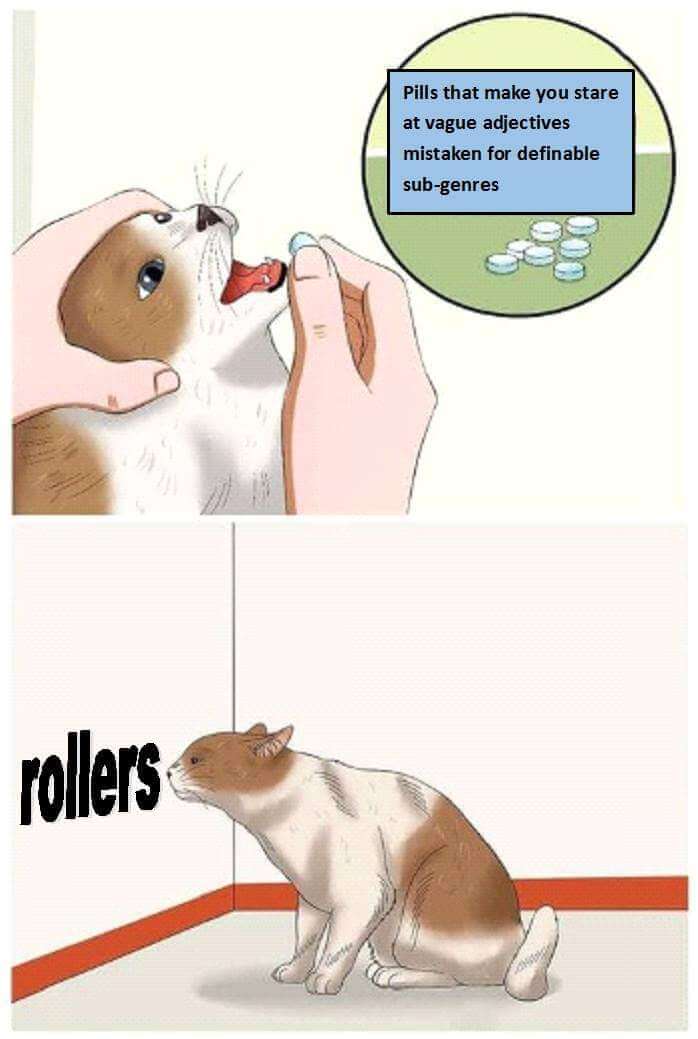
The History
With people wanting to classify rollers as a subgenre, they’re a bit behind the times. Rollers have been around literally since the beginning of drum and bass (and beyond). The term really only began to coined by beat nerds and press jerks (like yours truly) to describe the sound or feeling of a particular bassline or drum pattern. It’s akin to a descriptor like ‘banger’. If you think rollers should be a subgenre then perhaps bangers should be too? (Spoiler: it won’t. Ever.)
In the face of some of the newer subgenres that have changed so much over the years, rolling basslines and rollers are actually one of the only things that has stayed pretty consistent. We spoke to one of the originators of neurofunk, Skynet, on the matter.
“Rollers can take on any element of style,” he explains. “Sitting in a solid groove is what I feel it’s all about. Any different vibe or feeling, I understand people wanting to put it in a separate box. That’s what happened with all the current subgenres: liquid, tech step, even neurofunk. This is an arrangement though. It’s a style and a groove that’s always been there.”
Even in modern iterations of neurofunk, liquid and tech step, rolling basslines and drum patterns can provide that goove that may have been lost from earlier versions. Eatbrain boss Jade, creator of a 2018 favorite neurofunk roller in the form of his Man Eating Lizard Dragon DnB VIP seems to agree.
“Calling rollers a subgenre is like calling twostep beat a subgenre,” says Jade. “There are every kind of rollers – I especially enjoy deep minimal ones – but literally you can find rollers in every corner of the drum and bass spectrum. To me it’s a roller when the beat pattern is not too broken, and the bassline builds on long single notes instead of complex structures. It’s another example of why drum and bass is the greatest genre of all: infinite subgenres cross back and forth. No strict rules, only one thing: the tempo that binds us together.”
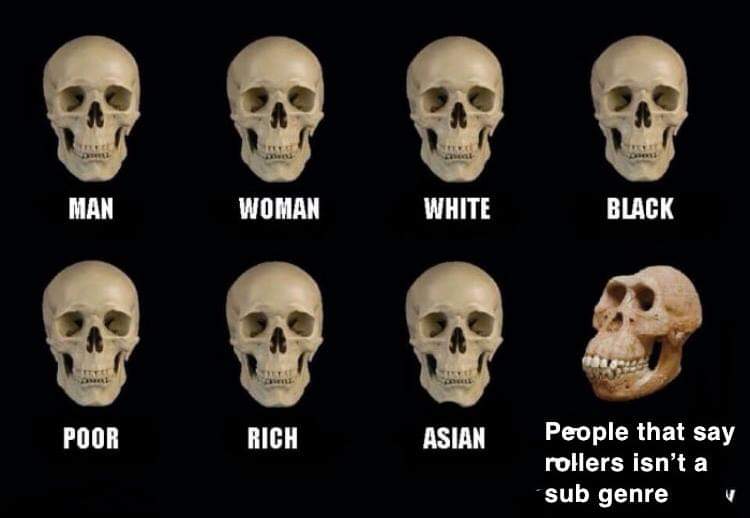
Don’t We Have Enough Bloody Subgenres?
Many of the producers we spoke to felt this way in some form or another: With all the little pigeonholes, subgenres and divisiveness we already have in drum and bass, why are we trying to make more divisions and why are we even arguing about it?
If anything, we should be uniting styles and giving artists more creative freedom. That’s how Andy C saw it when we asked him if he felt rollers should be another subgenre. “Nah I wouldn’t want to create another subgenre,” he tells us. “We’ve got enough of them already. Rollers for me are those tunes with the heads down vibe, where you lose yourself in the groove.”
Shimon, Andy C’s erstwhile bandmate from RAM Trilogy, possibly one of the most pivotal roller crafting collectives in D&B history, agrees. “I think we already have too many subgenres,” he explains. “I would love it all to just be Drum and Bass.”
So the case is mounting not only that rollers as a subgenre is a flawed premise, but that so many subgenres possibly have done more harm than good. When we talked to Ant TC1, he had an interesting take on it:
“Fabio coining ‘liquid’ initially was never put out there (by him) as an intended sub genre, it was just a phrase he coined that was taken on by pretty much everyone and seemed to make sense to everyone for that deeper D&B sound. The ‘roller’ term has been around WAY before ‘liquid’ came to light but I’ve never noticed it used as a subgenre. You can have different styles of rollers, such as a jungle themed roller. A perfect example would be DJ Krust’s Set Speed or the even more appropriately named Remember the Roller by Dr. S Gachet.
What have we learnt?
Well first of all, everyone reading this better have come away knowing that rollers in no way defines any subgenre. In fact more often than not, it unifies them. More important than the technical reasons for that, however, is the fact that over-defining drum and bass right now is a dangerous thing.
The way any music genre evolves, is that it has to go through stages; D&B in many ways is unrecognisable to what it was in 1996, 2001 or even 2008. What pushes these stages is not adding limiting parameters like categories, subgenres and even subcultures (I’m looking at you, jungle) but allowing artists to feel free to come up with new innovations and push boundaries.
The other thing that pushes the evolution of a music style is its fans being open-minded and willing to look at the way a track is put together; to feel the emotions conveyed by it and to try to see it the way the artist intended without shoving it into a box or being upset that a track is “breaking the rules of” or “killing” a particular subgenre.
If it were possible to make rollers into a subgenre, how would that be constructive? Rollers are, in fact, one of the major unifying points of drum and bass and jungle; one of the things, along with the tempo and the heavy bass, that’s been with us since the beginning. It’s the one thing that shouldn’t be separated out into a subgenre, so let’s all just agree to not waste any more time and let rollers continue to evolve the way they always have: By rolling along the timeline of jungle and drum and bass, leaving awestruck bassheads in their wake.
In the words Serum, a verified king of rollers, “spending time defining subgenres is one of the biggest wastes of time there is.”
Case closed. Rollers are most definitely not a subgenre. We’re all splitting hairs here. Now lets go back to sharing a love for the music that brought us all together in the first place: Fast dubstep.
